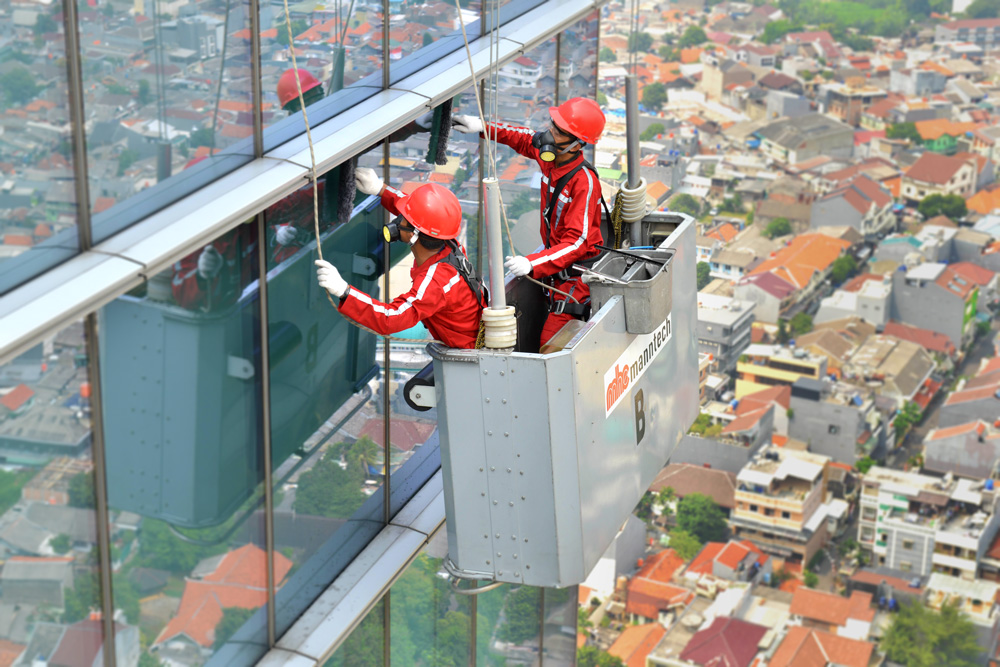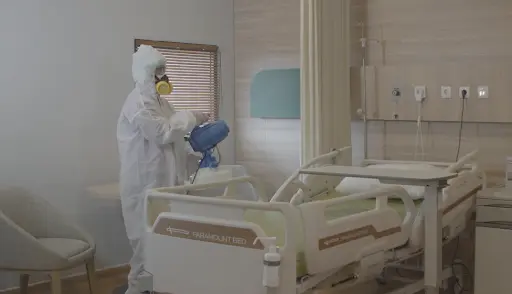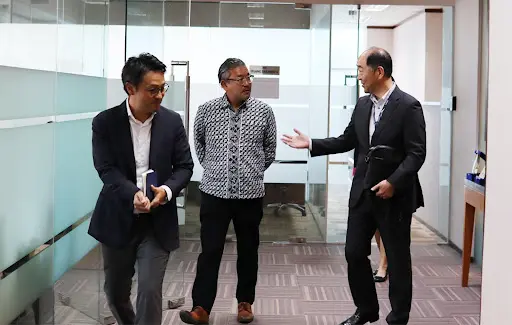10 Essential Hospital Cleaning SOPs You Must Understand

Team Shield On Service
Editorial
23 April 2025

Maintaining hospital cleanliness is no trivial matter. Behind the clean and sterile appearance of each room lies a structured and professional system. One key element that supports the performance of cleaning teams in healthcare facilities is the implementation of a hospital cleaning service SOP. These standard operating procedures not only keep the hospital neat but also play a major role in preventing the spread of infections.
If you work in the healthcare sector, understanding the hospital cleaning service SOP is a must. This article will outline the essential points of these procedures and why training for hospital cleaning staff should never be overlooked.
Hospital Cleaning Service SOP
Implementing a hospital cleaning service SOP goes beyond mopping floors or dusting surfaces. These procedures are designed based on health and safety standards to ensure every hospital area is cleaned appropriately. Here are 10 hospital cleaning service SOPs you should know:
1. Proper Use of Personal Protective Equipment (PPE)
Cleaning staff must wear appropriate PPE, including gloves, masks, closed shoes, and aprons if needed. This is crucial for protecting workers from direct exposure to germs, blood, or patient bodily fluids. In the hospital cleaning service SOP, PPE usage is a non-negotiable standard before starting any cleaning task.
2. Separation of Clean and Dirty Areas
It's vital to avoid using the same tools for both clean and contaminated areas. For example, mops used in patient rooms should not be used in restrooms. This principle prevents cross-contamination. The SOP also applies color-coding systems to cleaning tools for easier segregation.
3. Cleaning Order
Cleaning must proceed from the cleanest to the dirtiest areas—for example, starting from patient rooms to the restroom. This order reduces the risk of transferring microorganisms from dirty to clean zones. The hospital cleaning service SOP emphasizes the importance of following a consistent cleaning sequence.
Read Also: 7 Benefits of a Positive Work Environment for Employees
4. Use of Medical-Grade Disinfectants
Cleaning agents and disinfectants must meet hospital standards. Low-level disinfectants are used for public areas, while high-level ones are required for isolation rooms. Each product must also be applied with the right dosage and contact time according to the SOP.
5. Cleaning High-Touch Surfaces
Doorknobs, elevator buttons, light switches, and table surfaces are high-touch points that require frequent cleaning. In the SOP, these surfaces are prioritized due to their high potential for spreading bacteria or viruses among users.
6. Cleaning Biological Spills
In the case of spills involving blood or bodily fluids, special procedures must be followed. The SOP states that spills should be covered with absorbents, disinfected, then cleaned with full PPE. The waste must also be disposed of in designated medical waste bins.
7. Medical and Non-Medical Waste Management
Hospital waste is categorized as medical (infectious) and non-medical. Each type must be sorted at the source, collected in separate bags, and disposed of in designated containers. The SOP details each step, including how to seal and transport waste bags.
8. Proper Use of Equipment
All tools such as mops, buckets, cloths, and sprayers must be used according to their designated areas: patient rooms, restrooms, hallways, etc. Equipment must not be interchanged between areas to avoid cross-contamination.
Read Also: 5 Benefits of Pest Control for the Work Environment
9. Scheduled Cleaning Frequency
The SOP also outlines cleaning frequencies. High-traffic areas like restrooms and waiting rooms should be cleaned multiple times daily. Inpatient rooms follow a set schedule and may be cleaned more often as needed. Activity logs are also part of daily performance evaluations.
10. Emergency Procedures for Contamination Incidents
In the event of chemical spills or infectious waste leaks, cleaning staff must follow emergency protocols. The hospital cleaning service SOP includes isolating the area, prompt cleanup, and reporting to supervisors for further action.
Hospital Cleaning Staff Training
Cleaning staff in hospitals cannot be equated with those in public spaces. Hospital cleaning services require specialized training tailored to healthcare environments. Training typically includes:
-
Comprehensive understanding of hospital cleaning service SOPs
-
Proper cleaning and disinfection techniques based on WHO and Ministry of Health standards
-
Correct use of PPE
-
Knowledge of waste types and disposal methods
-
Emergency response to biological hazards
-
Professional conduct in hospitals, including communication with patients and staff
-
Simulated cleaning practices in patient rooms, operating theaters, public restrooms, and isolation areas
With the right training, cleaning personnel can work more safely, efficiently, and professionally—ensuring protection not only for themselves but for the entire hospital community.
Consistently understanding and implementing hospital cleaning service SOPs is key to creating a safe and hygienic hospital environment. To ensure these procedures run smoothly, routine training and strong cooperation among hospital staff are essential.
Read Also: 6 Pest Control Skills to Maintain a Pest-Free Environment
Professional Cleaning Services for Hospitals by SOS!
If you manage a hospital or other healthcare facility and are looking for an experienced cleaning partner, it’s time to trust the experts. SOS offers professional cleaning services specifically designed for the healthcare sector. We understand how vital cleanliness standards are in preventing infection and ensuring everyone's safety.
With years of experience and trained personnel, SOS implements hospital cleaning service SOPs that meet industry standards. Our expert team is ready to support your facility’s operations with top-tier cleaning solutions. Contact us now via WhatsApp and consult your needs with SOS professionals!



